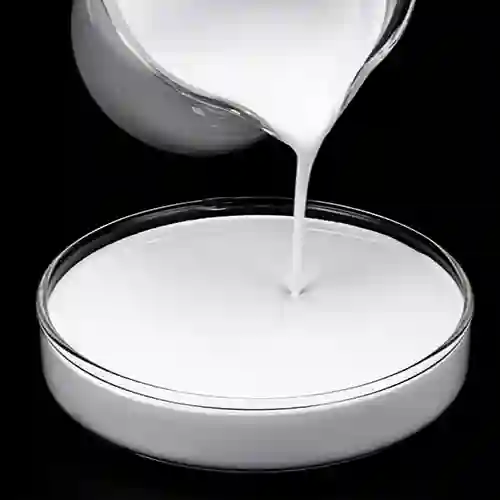Tibet Mag said, in the presence of a small amount of water, when the powder granular magnesium oxide that maintains fluidity is subjected to thousand mixing or dry grinding, a highly efficient hydration reaction occurs to produce powder granular magnesium hydroxide; when the product is cooked in the presence of water, the hydration efficiency is greatly improved and powder granular magnesium hydroxide is produced efficiently. The hydration efficiency and water dispersion can be further improved when catalysts and/or dispersants are added to the kilo-mixing system or dry grinding system.
In the preparation of slurry magnesium hydroxide, the order of adding water and dispersant is not particularly limited, and dispersant (preferably polymeric surfactant) can be added to the aqueous suspension of magnesium hydroxide, and a mixture of water and dispersant can be added to the powdered magnesium hydroxide; also the powdered magnesium hydroxide can be treated with dispersant and then water can be added; moreover, the above components can be mixed simultaneously to disperse magnesium hydroxide in water The above dispersion and mixing can be done by stirring. The above dispersion and mixing can be carried out by stirring, oscillation, ultrasonic irradiation and other customary methods.
Dispersant is usually polymer surfactant, adding polymer surfactant obtained from the magnesium hydroxide water suspension has the characteristics of high dispersion stability, high concentration, low viscosity, this kind of slurry in storage, pipeline transport and other aspects of high operability. Moreover, because of the high dispersion stability and dilution stability, it is easy to modulate the aqueous suspension of magnesium hydroxide with the required concentration.
The polymeric surfactants include anionic surfactants and nonionic surfactants. As anionic surfactants, there are polyacrylic acid, polymethacrylic acid, polystyrene sulfonic acid, and sulfated polyvinyl alcohol, which have a large effect on the low viscosity of aqueous slurry.
Using 01%-5.0% (wt) of polyacrylic acid with pH about 80-120 to reduce the viscosity of magnesium hydroxide slurry; using anionic polymers and copolymers to reduce the viscosity of magnesium hydroxide slurry to increase its stability; adding light magnesium oxide magnesium oxide (800μm), NaOH (3.3%), carboxymethyl cellulose (0.2%), acetic acid (4.0%), acidic sodium sulfite ( 4.0%), sodium polyacrylate (2.0%), and the slurry magnesium hydroxide with good dispersion properties can be obtained after the maturation process.
In order to improve the viscosity, stability and fluidity of aqueous slurry, the method of preparing aqueous slurry of magnesium hydroxide by stirring and mixing of magnesium hydroxide, anionic polymeric dispersant and water-soluble alkali metal salt. A method of modulating activated magnesium hydroxide by adding magnesium oxide to a warm water solution of anionic surfactant containing fatty acid based alkali metal salts as a main component; heating and simultaneous digestion is performed.

